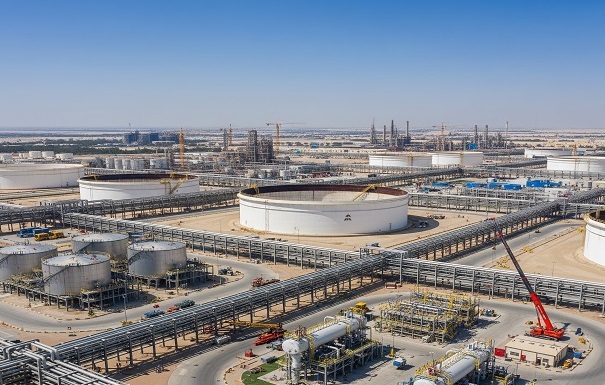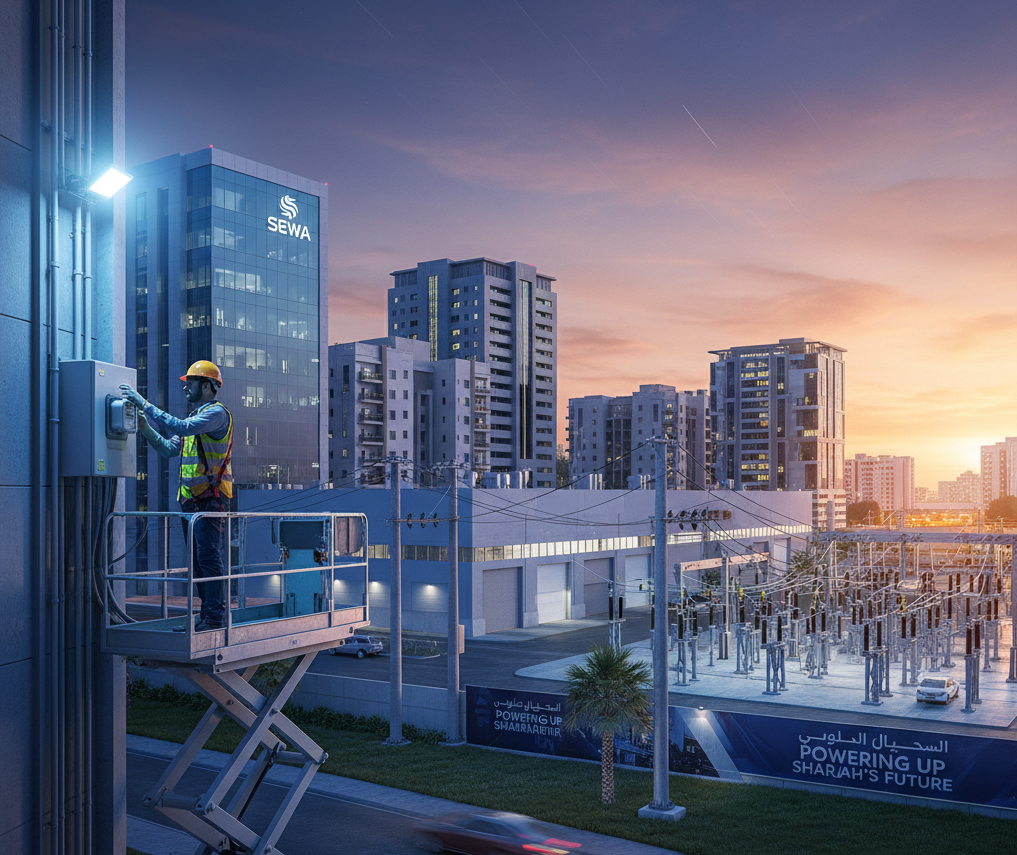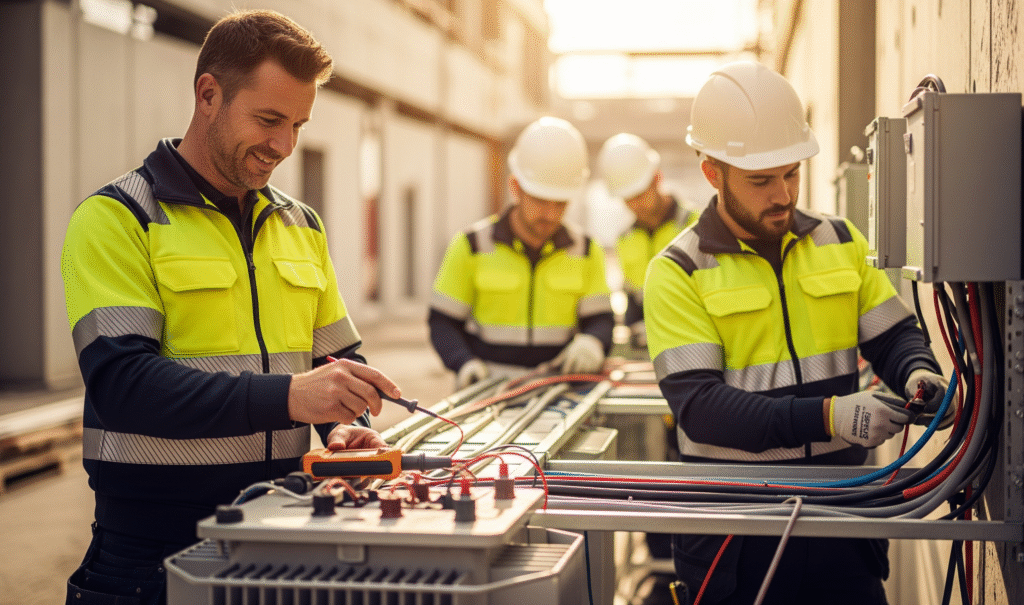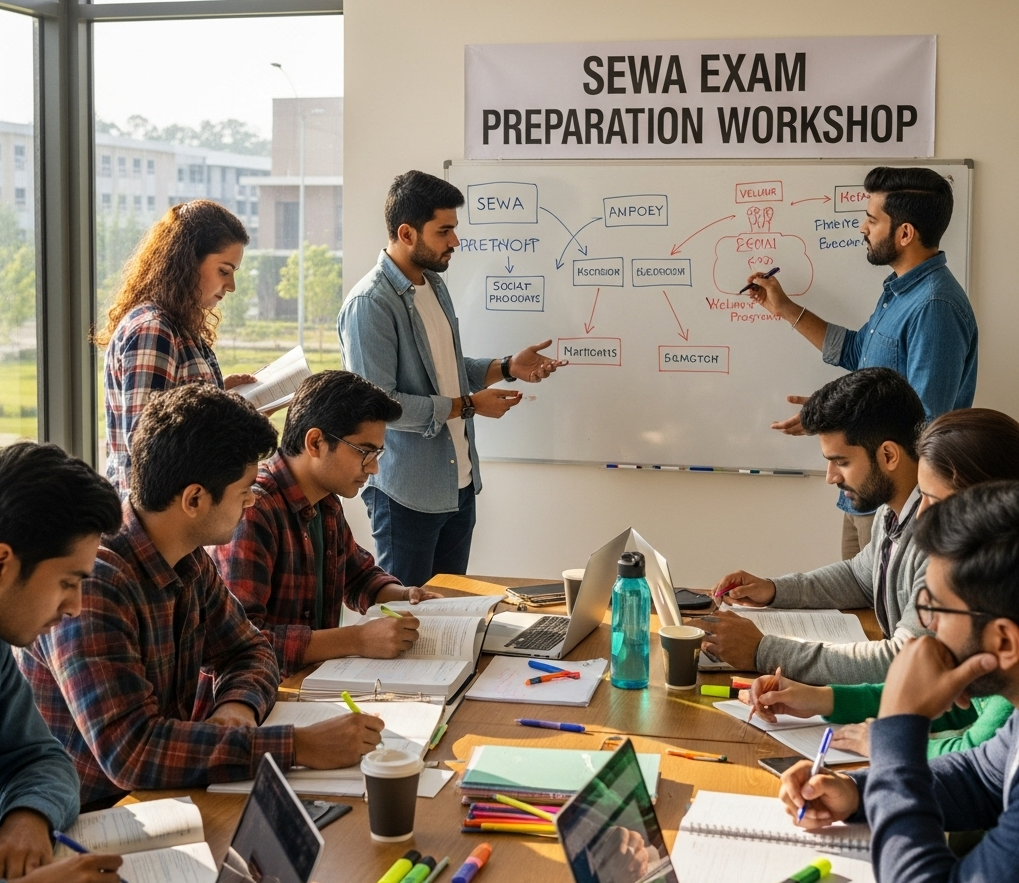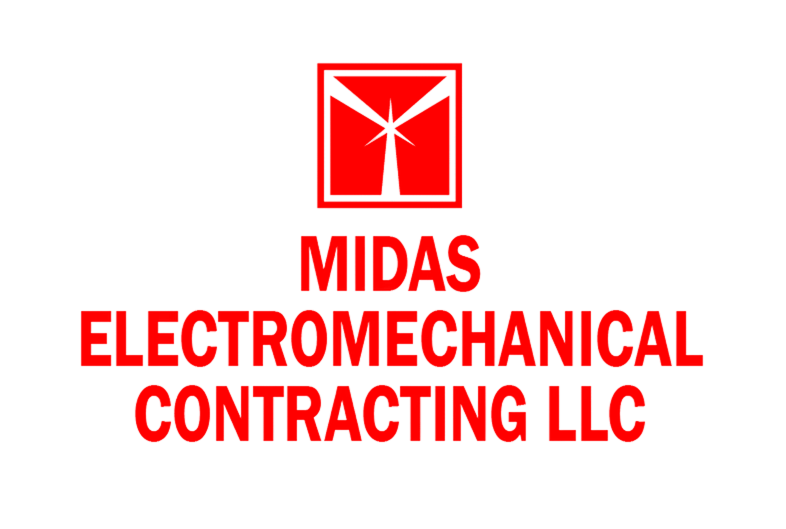Securing a power connection for a new industrial facility or upgrading an existing one in Sharjah requires a precise, multi-stage process governed by SEWA (Sharjah Electricity and Water Authority) regulations. This guide provides a detailed breakdown of the steps, from initial planning to final energization, with a focus on the specific technical requirements and procedures.
Understanding Contractor Grades and Power Capacity
SEWA categorizes contractors into four grades, with a critical distinction for industrial projects based on power load:
- Grade 1 & 2 Contractors: The difference between these two grades is significant for high-power industrial projects. A Grade 2 contractor is limited to working on projects with a maximum load of 1500 kVA. Above this limit, only a Grade 1 contractor is authorized to handle the work. This is a crucial factor to consider as it directly impacts your facility’s power capacity and future scalability.
Phase 1: Planning and Initial Submissions
- Initial Drawings & Consultant Appointment: If your industrial project does not yet have an initial electrical drawing, a SEWA-approved consultant must be appointed to create one. Alternatively, a SEWA-approved contractor with in-house design capabilities can fulfill this role, providing a more streamlined process.
- Applying for LV Inspection (for Upgrades): For facilities with an existing power connection that require an additional load or an upgrade, the process begins with an application for an LV (Low Voltage) inspection. Experts from SEWA will conduct a detailed site inspection and generate a report based on their findings. This report is the foundational document for all subsequent upgrade work.
Phase 2: Drawing Approval and Payment
- Shop Drawings: A shop drawing is required in two specific scenarios:
- If there are any changes from the initial drawing, even minor ones.
- If the connection date stamped on the initial drawing has passed, the drawing is considered outdated. The shop drawing must be an exact representation of the site conditions and the updated electrical layout.
- Client Payments for SEWA Approval: This is a critical financial step. The client must pay the load charges to SEWA to get the new shop drawing approved with a new connection date. This is required whether it’s for a fresh project, a load upgrade, or if the initial drawing has expired. This payment confirms the project’s new power allocation and allows the contractor to proceed.
Phase 3: Implementation and Execution
Once the shop drawing is approved by SEWA, the contractor can move forward with the implementation of the project on-site according to the new design. This includes all electrical, civil, and other related works.
Crucial Payment Step: After the project’s execution is complete, the client must pay for the transformer and cable charges. This payment is a prerequisite for the final stages of connection and is a non-negotiable step in the SEWA process.
Phase 4: Final Inspection, Metering, and Energization
The final stage is a synchronized effort between the contractor and various SEWA departments.
- Engineering Inspection: The contractor applies for an engineering inspection. A SEWA engineer will thoroughly inspect the executed work against the approved shop drawings and ensure all standards are met.
- HV Department Work: While the engineering inspection is being carried out, the HV (High Voltage) department performs its essential tasks. This includes installing the transformer and excavating from the main substation to the feeder, which is located in your facility’s transformer room.
- Meter Fixing: Once the engineering inspection is passed, the meter fixing team from the connection department will be dispatched to install the meter at your facility.
- Energizing: The final step is conducted by a foreman from the connection department, who will energize the power connection, officially completing the process and making your facility operational.

